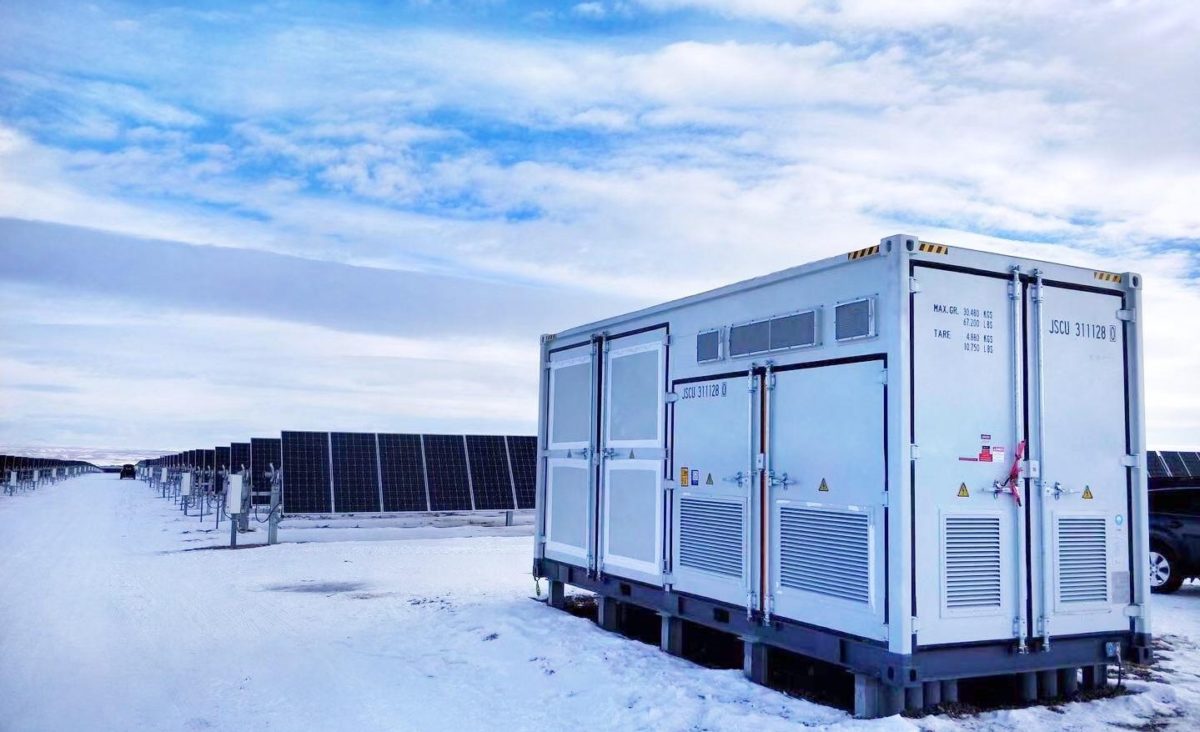Sungrow is making big moves in the U.S. market. The inverter maker has already supplied some landmark projects in the United States – such as the largest solar projects under construction in Wyoming and Washington State and the biggest plant online in Rhode Island, as well as recently shipping inverters to the 200 MW Techren 2 solar project in Nevada.
And despite the Trump Administration’s tariffs on Chinese products including inverters, Sungrow has a goal of shipping around 1.5 GW of inverters to the United States this year, a 250% growth over its 2018 shipment levels.
The company is getting close, and told pv magazine that it currently holds more than 1 GW of inverter contracts for 2019 delivery. “As we are now in the middle of Q1 there are still some bookings coming in,” says Zach Ward, the head of Sungrow’s North American division.
Dealing with the tariffs
Thanks to proactive planning, Ward says Sungrow has been able to avoid paying the 10% Section 301 tariffs on the product it has shipped to the U.S. market. He notes that the company has been closely monitoring the political situation in the United States and started to react when the Section 201 tariffs on solar cells and modules were imposed.
“Immediately, when the first tariff was mentioned – when it started with the panels – we took all risk for delivery,” notes Ward. “There is one thing that financiers don’t like, it is risk. We needed to take that off the table.”
Sungrow’s next move was to set up a 3 GW factory in India, which opened in July 2018 – well before the Section 301 tariffs on inverters were announced. “We have multiple manufacturing centers, but the UL products were being made in China, so we had to move those over to a UL facility that we had in India,” explains Ward.
He further revealed that since December, all of Sungrow’s string inverters for the U.S. market were coming out of its India factory, and that it will be soon rolling out central inverters as well. While some inverters for larger projects like Techren 2 have been shipped from China, those were delivered in December – before the Section 301 tariffs took effect.
Ward also notes that many of the components that go into Sungrow’s inverters come from Europe, which made it easier to shift the assembly of these products from China to India.
Future business
Either this week or next week U.S. and Chinese authorities are expected to reveal whether or not they have come to a compromise on trade matters, and if they do not the Section 301 tariffs are scheduled to move to 25%. As for whether or not Sungrow expects a resolution, Ward observes that “I don’t even think Trump or Xi (Chinese General Secretary Xi Jinping) can answer that question accurately.”
But either way, the company says that it expects both growth in the U.S. market and in its share of that market. To support this, Sungrow has set up a new service center in Tempe, Arizona.
One of the areas that has Ward particularly excited is energy storage. He notes that Sungrow has shipped inverters for over 100 megawatt-hours of battery storage projects so far, and among the five products that it plans to launch this year, two are new inverter products for energy storage installations.
“Despite all of this trade war and tariffs and all of the things that we are going through, Sungrow is still making a significant investment in North America,” Ward told pv magazine. “We feel like this is one of the largest markets globally, and we want to be the biggest manufacturer globally.”
This content is protected by copyright and may not be reused. If you want to cooperate with us and would like to reuse some of our content, please contact: editors@pv-magazine.com.









By submitting this form you agree to pv magazine using your data for the purposes of publishing your comment.
Your personal data will only be disclosed or otherwise transmitted to third parties for the purposes of spam filtering or if this is necessary for technical maintenance of the website. Any other transfer to third parties will not take place unless this is justified on the basis of applicable data protection regulations or if pv magazine is legally obliged to do so.
You may revoke this consent at any time with effect for the future, in which case your personal data will be deleted immediately. Otherwise, your data will be deleted if pv magazine has processed your request or the purpose of data storage is fulfilled.
Further information on data privacy can be found in our Data Protection Policy.